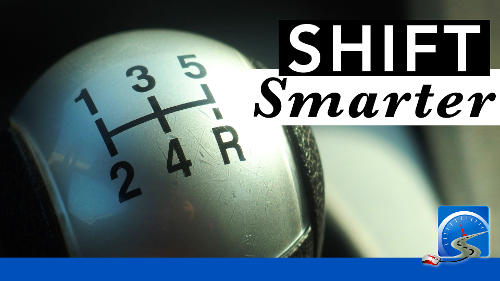The basic skill for learning to drive a manual car is clutch control.
How To Drive A Manual Car for Beginners Step by Step :: Lesson #1 | Manual Transmission Smart
Updated: October 2020
Overview• Work on level ground, preferable in a parking lot or a road with few vehicles;
• Turn off the vehicle and roll down your window; • The pedals from right to left are: accelerator, brake and clutch or C, B, A. • The clutch engages and dis-engages the motor and transmission • Depress the clutch pedal, and locate the gears in the transmission. When the transmission is in neutral the selector will move side-to-side. Know that the selector rests between the middle gears; • Put the transmission into 1st gear - to the left and up. Isolate the clutch. In other words, use just the clutch to get the vehicle going; • The friction point (biting point) is where the clutch engages the drive train and the vehicle begins to move; • Learn where the friction point (biting point) is by both feeling the vehicle and watching the tachometer; • To learn where the friction (biting point) is, apply the parking brake and release the clutch slowly. Push the clutch back in when you see the tachometer dip and feel the feel want to move forward. • After you've practiced with the parking brake applied, release the parking brake and allow the vehicle to move forward without applying the accelerator. • Control the clutch through the friction point to prevent stalling; • After you've confidently located the friction (biting) point and can move the vehicle forward without stalling the engine, move to lesson two which combines the clutch and the accelerator. |
Closed Caption
Introduction
Hi there, smart drivers.
Rick with Smart Drive Test, talking to you today about driving a manual transmission.
This is the very first lesson that you need to put in place in order to learn how to drive a manual transmission or a stick shift.
One of the reasons that students have difficulty driving a manual transmission is, first of all, they don't take the time to learn clutch control.
You have to isolate the clutch and learn how to use the clutch by itself without-- before you add in the throttle and you add in the brakes.
So take the time to learn how to use the clutch.
 The pedals for a manual car are the same whether you drive on the left or right: clutch, brake, & accelerator from left to right.
The pedals for a manual car are the same whether you drive on the left or right: clutch, brake, & accelerator from left to right.
The next thing you have to do is you have to find out where the biting point, as they call it in Europe, or the friction point is on the clutch.
The friction point is where the clutch comes out, and it begins to engage the engine with the drive train and the vehicle begins to move forward.
One of the reasons that students have so much difficulty with that task of finding the friction point on the clutch is because you've got big, huge leg muscles that are trying to do fine motor control.
 When learning how to control the clutch in a manual car you have to train big leg muscles fine motor control.
When learning how to control the clutch in a manual car you have to train big leg muscles fine motor control.
Big leg muscles are used for running and jumping and kicking.
They're not used for fine motor control.
That's what our fingers are for.
So that is one of the reasons why you're having difficulty, because of the limitations of our body.
So it takes time to train muscle memory in our big leg muscles to get that fine motor control and fine clutch control.
Once you find clutch control, the rest of it is easy.
The two hardest gears for learning how to drive a manual transmission are first and reverse, so practice in first and reverse.
Go to a parking lot-- this is where you're going to start out for your first lesson in a manual transmission-- and learn clutch control.
Figure out where the biting point is.
Figure out where the friction point is on the clutch.
Make sure you wear running shoes.
 When learning to drive a manual car, sneakers will give you best contact with the pedals and allow you to control the clutch.
When learning to drive a manual car, sneakers will give you best contact with the pedals and allow you to control the clutch.
Don't wear work boots or hiking boots.
It's just too hard.
You need something that you can feel the clutch and figure out where it is.
As well, I'll give you other techniques to be able to find the friction point or the biting point.
I'll give you a visual as well as an audible aid for learning how to find that and listening to the vehicle and figuring out how to find clutch control.
This is the basics.
This is the fundamentals.
And this is-- for new drivers, I cannot emphasize this enough.
It's the same thing as what I talk about driving, turning, holding the car in the center of the lane, and those types of things.
If you're having difficulty with that, go back to the fundamentals.
And I'll put a card up here for you in the corner about the fundamentals of learning how to drive.
So this is the fundamentals of learning how to drive a manual transmission.
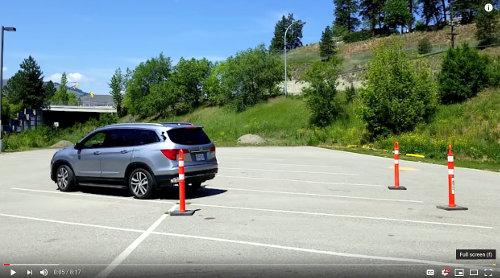 Work with pylons in a parking lot to learn learn the fundamentals of driving - mastery of the primary controls and where your vehicle is in space and place.
Work with pylons in a parking lot to learn learn the fundamentals of driving - mastery of the primary controls and where your vehicle is in space and place.
We're going to go over that.
We're going to give you some tips, techniques, and exercises that you can do so you can learn how to drive a manual transmission.
Stick around, we'll be right back with that information.
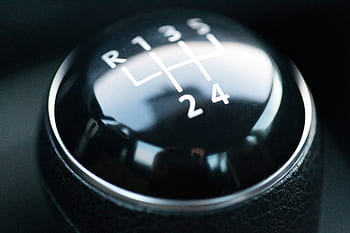
Get Your How to Drive a Manual Car PDF
• FEAR :: Learn the fundamental skill that will have you driving a manual car in no time;
• SELF-CONFIDENCE :: Get the exact skills from a licensed driving instructor that will guarantee your success;
• CONFUSION :: Cut through the conflicting driving a manual car and get the good stuff;
• QUALIFIED :: Smart Drive Test has helped 1000s to drive a manual car...and we can help you!
Shift Pattern for 5-Speed Transmission
Hi, there, smart drivers.
Rick with Smart Drive Test.
Welcome back.
Talking to you today about the fundamental lesson, the first lesson for learning how to drive a manual transmission.
Now the first thing you need to know about driving a manual transmission is the stick shift.
And the stick shift is always a basic H-pattern regardless of which side of the car you're sitting on.
Whether you're in Australia or whether you are in Europe, it's going to be a basic H pattern.
Now, most transmissions and passenger vehicles are going to be 5-speed.
 All manual transmission are basic 5-speed 'H' pattern. And when in neutral, the selector rests between the middle gears.
All manual transmission are basic 5-speed 'H' pattern. And when in neutral, the selector rests between the middle gears.
Some of the higher end cars are now beginning to have six speeds in them, but it's just another gear.
So if you can figure out the shift pattern for a 5-speed, the 6-speed pattern is going to be more or less the same.
What you need to know is that regardless of transmission, the selector always rests between the middle gears.
So it's designed to rest in neutral between the middle gears, as you can see here in the image.
And to find first, it's over and up to the right.
So to get to first and second, you actually have to pull the selector or push the selector, depending on which side of the vehicle you're sitting on, over to the left side, and that's where first and second are located.
And third and fourth are in the middle, so you just let it go to its natural resting place.
Push it straight forward, you'll find third.
Back to fourth.
Now, to find fifth and six, it will be over to the right side of the transmission.
And you'll have to push the selector over to find those gears.
Reverse will probably be over there as well.
On some transmissions, reverse is over and up to the left depending on the shift pattern.
 To select reverse in this car, it is over to the left and up. Some times there is a locking ring on the selector that has to be pulled up so it will go into reverse gear.
To select reverse in this car, it is over to the left and up. Some times there is a locking ring on the selector that has to be pulled up so it will go into reverse gear.
The shift pattern is usually on the top of the selector or it'll be in the owner's manual or somewhere else in the vehicle.
So that's the first thing you need to find.
And as I said in the introduction, first and reverse are going to be your most difficult gears, and that's what I'm going to help you with today.
Clutch Control
Now the first lesson.
You're not going to use a throttle.
You're not going to use the brake.
You're just going to figure out clutch control.
You're going to figure out where the friction point is because you have to control the clutch through the friction point.
 Reversing up to a pylon in a parking lot will teach you clutch control and when to push the clutch in before braking.
Reversing up to a pylon in a parking lot will teach you clutch control and when to push the clutch in before braking.
If you can control the clutch and you can figure out how to work first and reverse and you spend the time doing this, you spend the time doing the exercises that I'm going to show you here, you will be able to drive a manual transmission within a couple of hours.
It will be very easy to accelerate your learning and figure out how to drive a manual transmission.
It's not going to be pretty, but you will be able to move the vehicle forward and you'll be able to drive the vehicle in traffic.
The Transmission Makes the Car Go Faster
Now, first in reverse, spend the time with first in reverse and I'll give you some visual aids as well as some audible aids to be able to find out where the friction point is on the vehicle.
Some basic information about transmissions.
Regardless of whether it's a manual transmission or whether it's an automatic transmission, they all have gears in them.
And essentially the hardest part of getting a vehicle going or any object, to move it forward is to overcome inertia.
And to overcome that inertia, think of it like being on a bicycle, right?
When you start [GRINDING NOISE] and you first start getting the bicycle going, it's really tough to get it going.
So we need big gears.
 Gears in the transmission are what make the vehicle go faster. And to make a manual car go faster, you have to shift gears.
Gears in the transmission are what make the vehicle go faster. And to make a manual car go faster, you have to shift gears.
So think of it like a bicycle that has a big gear on the front and a big gear on the back and the chain connects the two gears.
And that allows you to get the vehicle going or the bicycle going because you've got a big gear here and a big gear here.
Now, you're limited in speed because those gears don't turn very fast.
It's one to one.
So every time you rotate the pedals, the wheel goes around one time at the back.
It doesn't work very well.
So once you get the vehicle going and overcome the initial inertia, the way that you make the vehicle go faster is by taking the big gear on the front and chaining it to a smaller gear on the back.
And how that works is that every revolution on the big gear on the front, the back one is going to turn three or four times.
So every time you turn the pedals on the bicycle, the rear wheel is going to turn three or four times.
A 10-Speed Bicycle & A Vehicle's Transmission
So it's going to allow you to go really fast.
A transmission works almost identical.
It just keeps-- as you shift the gears, the engine is allowed to turn a smaller and smaller gear.
Therefore the vehicle is able to go faster and overcome that inertia.

And the transmission, a manual transmission or an automatic transmission both work the same.
There's Nothing Automatic About an Automatic Transmission
The difference between an automatic and manual transmission is that a automatic transmission, the motor is connected to the drive train via hydraulic pressure.
There's hydraulic oil in the transmission that turns the turbine and moves the vehicle forward.
So when you reduce the amount of revolutions of the pump, that creates hydraulic pressure in the transmission.
The engine will basically sit there and idle.
And then you'll probably notice when you're driving an automatic transmission, there's some residual power there.
When you're sitting at a traffic light, it's kind of pushing a little bit.
That's because of the hydraulic pressure can't be completely eliminated in an automatic transmission.
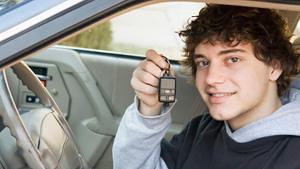
LEARN THE SECRETS THAT DRIVING SCHOOLS DON'T TELL YOU!
• FEAR :: Know that you WON'T have to face friends & family and tell them you didn't pass;
• SELF-CONFIDENCE :: Get the exact skills from a licensed driving instructor that will guarantee your success;
• CONFUSION :: Cut through the conflicting driving procedures information;
• QUALIFIED :: Smart Drive Test has helped 1000s pass their driver's test...and we can help you!
What The Clutch?
A manual transmission is a direct drive via the clutch.
There's two spinning plates in the clutch assembly, and when you push the clutch in, you separate those two plates and disconnect the drive train, the transmission, from the engine.
As you let the clutch out, those two plates come together and they spin.
And it's called the biting point.
It's when there's enough friction for those two plates to connect, and the engine is reconnected to the drive train.
So that's essentially what you're doing when you're finding the biting point or the friction point in the clutch assembly, is you're bringing those two plates together.
Riding the Clutch...Don't, Simply Don't
Now, if you ride the clutch, those two plates never come together in contact fully and you get friction and you wear out your clutch.
And that's why clutches have to be replaced.
Now, the bigger the vehicle, the more important it is, when you shift gears, get your foot off the clutch as quickly as possible.
Come through the friction point, that zone where it's engaging and moving forward.
 The bigger the vehicle, the more important it become NOT to ride the clutch. Get your foot off the clutch as efficiently and quickly as possible.
The bigger the vehicle, the more important it become NOT to ride the clutch. Get your foot off the clutch as efficiently and quickly as possible.
Get your foot off the clutch as quickly as possible.
Now, we'll go over that more.
Today, this is about finding the friction point and controlling the clutch and not stalling the vehicle.
So the first exercise that we're going to do, we're not even going to move the vehicle.
I'm going to show you how to find the friction point with the parking brake on and not moving the vehicle.
So that's what we're going to do first.
And I'll put a camera up here for you for the pedals as well so you can see what my foot is doing.
Slip Into Something Comfortable
And again, I'll stress wear running shoes, sneakers, trainers.
I just said the same thing three times in three different languages.
 When learning how to drive a manual transmission wear comfortable shoes to have better contact with the vehicle.
When learning how to drive a manual transmission wear comfortable shoes to have better contact with the vehicle.
So hiking boots, work boots, don't wear those.
OK? They're too big.
They're too clunky.
And they won't allow your toes to feel where the friction point is in the clutch.
Find the Friction Point (Biting Point)
Exercise #1
So this is the first thing we're going to do-- find the friction point in the clutch.
Finding the friction point or the biting point of the clutch, that's when the engine engages with the drive train and the vehicle begins to move forward.
So there's a couple of ways you can do that.
First, you can listen to the motor and hear it.
It will begin to lug down.
You'll hear the engine lugging down when it engages the friction point.
So we're going to do this with first or reverse.
I don't even want you to move the vehicle at this point.
Leave the parking brake on, and use that.
And just control the vehicle so it doesn't stall in the friction point.
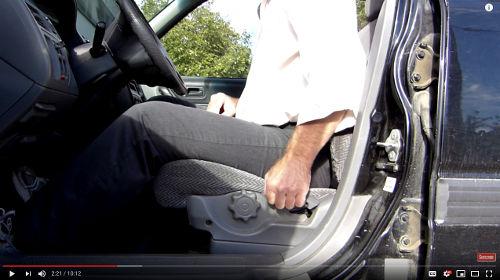 Adjusting the seat so there's a slight bend in the knee when you put your foot on the floor behind the pedals will allow you to control the clutch well.
Adjusting the seat so there's a slight bend in the knee when you put your foot on the floor behind the pedals will allow you to control the clutch well.
So essentially what we do is we push the clutch all the way in, we push the vehicle into first gear.
Up and over to the left is first gear.
So we put it into first gear, and we've got the parking brake on so we don't need to hold the brake.
We can just take our foot off the brake pedal.
And you simply let the clutch out slowly, slowly, slowly.
And you can hear it.
I can hear the motor bogging down.
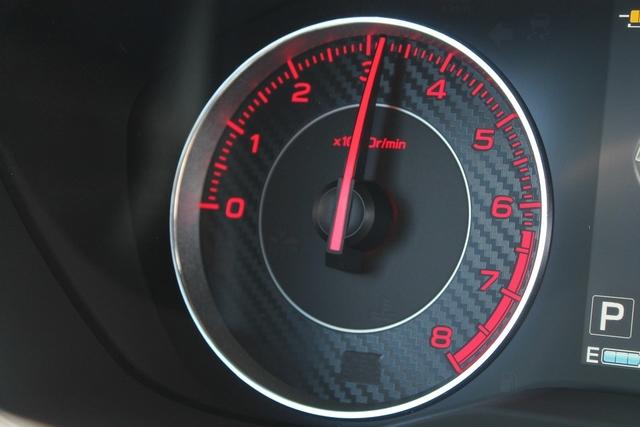 Use the tachometer as a visual aid to help you learn the biting point of the clutch. When the clutch begins to engage, the needle on the tachometer will begin to dip.
Use the tachometer as a visual aid to help you learn the biting point of the clutch. When the clutch begins to engage, the needle on the tachometer will begin to dip.
Now, the other indicator that you're near the friction point is the tachometer.
Most vehicles in this day and age are going to have a tachometer, which tells you the engine revolutions.
And you can see here in the camera that as soon as I find the friction point, the tachometer goes down.
You can see that as soon as it goes down, I push the clutch back in.
Now, you can feel the vehicle trying to move forward a little bit, right?
So the tachometer will give you a visual of where the friction point is.
So just bring the clutch out, let the tachometer drop down.
And all engines now are electronic fuel injection.
So as soon as the engine, regardless of whether it's a petrol engine or whether it's a diesel engine, as soon as it detects that there is torque on the engine, that more power is required, it is going to torque up.
So it's unlikely-- especially the newer the vehicle-- that it's going to stall.
So you just worked that.
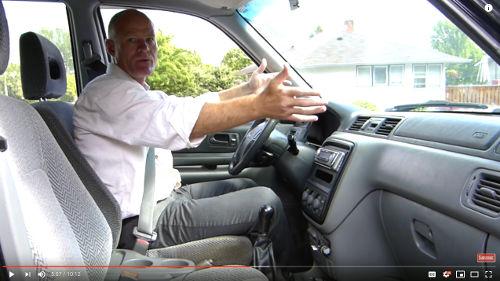 When learning how to drive a manual car, wear comfortable clothing and eliminate distractions inside the vehicle.
When learning how to drive a manual car, wear comfortable clothing and eliminate distractions inside the vehicle.
OK?
And what I would suggest for those of you learning how to find the friction point, just let the clutch out.
Do that about 30 times in first gear.
So after you find first gear, put your foot on the brake pedal.
Take it out first, put it into reverse, and then do it again.
Do it another 30 times.
Find that friction point.
And just out on the clutch, watch the tachometer go down.
On a petrol engine, you'll be able to bring it down to about 500 RPMs.
And then just push it back in.
Just push it back in.
 When parking a vehicle fitted with either a manual or automatic transmission be sure to apply the parking brake every time you leave the vehicle unattended.
When parking a vehicle fitted with either a manual or automatic transmission be sure to apply the parking brake every time you leave the vehicle unattended.
So that's how you find the friction point on the vehicle that you are driving.
Just let the clutch out, let it drop to about 500, push it back in.
You'll feel the vehicle move a little bit against the parking brake, but that's how you find the friction point or the biting point of the clutch.
Once you find that and you are able to control that so the vehicle isn't stalling against the parking brake, that is the first step.
That is the fundamentals of learning how to drive a manual transmission is controlling the clutch, teaching the big muscles in your leg fine motor control.
Because as they said in the introduction, the big leg muscles are not designed for fine motor control.
They're designed for running, jumping, and kicking and the big aggressive movements.
They're not designed for this little bit of movement.
OK, so do that 30 times.
Find the Friction Point (Biting Point)
Exercise #2
After you find that friction point and you were able to control that clutch against the parking brake, then we move on to the next step, which is actually moving the vehicle forward and controlling the clutch through the friction point.
So we've learned where the friction point is.
You've done your exercise both in first and reverse, and you've moved it out to the friction point against the parking brake.
Now, the next exercise is going to be moving the vehicle forward, actually bringing in clutch all the way out.
Electronic Fuel Injection Engines
And as I said, in the last 25 years, all vehicles manufactured are going to be electronic fuel injection regardless of whether it's a gas engine, a petrol engine, or a diesel engine.
And the first two were the same.
Petrol and gas engines are the same.
I was just speaking in different languages because people in Europe call them petrol engines.
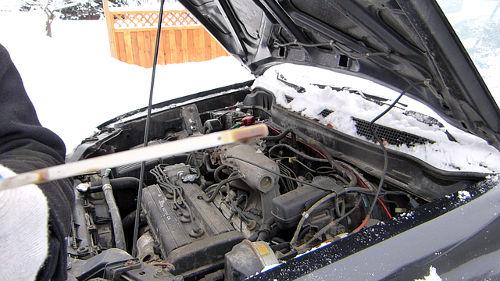 Electronic fuel injected engines are better and make learning to drive a manual car easier.
Electronic fuel injected engines are better and make learning to drive a manual car easier.
So now what we're going to do is we're going to engage the transmission into first gear.
Put your foot on the brake pedal and hold the vehicle into first, clutch all the way in, parking brake off.
And now we're going to move the vehicle forward just using the clutch.
We're not going to use the throttle.
This is fundamentals, and for those of you-- oh, we got to use throttle.
No, you don't have to use throttle.
Combining Throttle with Clutch
You will use throttle later when you combine the clutch and the throttle together.
But right now we're just isolating the clutch and learning how to control the clutch through the friction point because if you can learn this, you can master this and you can be competent with this skill, the rest of driving a manual transmission is easy-peasy.
OK?
It's the same thing as learning how to do turns, how to center the vehicle in the lane.
You have to learn the fundamentals before you can do the advanced skills.
So this is what we're going to do.
 When first starting out in a manual car, learn how to get the car going with just the clutch. Combine the accelerator later after you master clutch control.
When first starting out in a manual car, learn how to get the car going with just the clutch. Combine the accelerator later after you master clutch control.
So we're holding the brake, and this is how you start off with a manual transmission.
Hold the brake.
Bring the clutch out to the friction point, what we were doing before with the parking brake.
You can see it throttle down.
Now the vehicle is being held by the clutch.
Take your foot off the throttle, bring the vehicle forward.
And you should be able to take your foot completely off the clutch, and it won't stall because it's electronic fuel injection.
And I really should have my hands on the steering wheel while we're moving forward.
But for purposes of this exercise, we're just in a parking lot.
There isn't anybody else around here.
OK? So that was fairly easy because we were on a bit of a downhill there.
Now we're pointed uphill, and the same thing.
 Practice hill starts in a manual car after you've mastered clutch control and are comfortable driving in light traffic.
Practice hill starts in a manual car after you've mastered clutch control and are comfortable driving in light traffic.
So I going to put my hands on the steering wheel this time because I'm just going to do this.
Now, hold the brake, clutch out to the friction point.
And you can see I can hear it, I can feel it because it's vibrating a little bit.
I can see the tachometer has gone down a little bit.
I take my foot off the brake and I control the clutch out through the friction point, all the way out, and the vehicle just goes forward.
OK? So that's how you do that.
Now, we're going to do it in reverse.
Same thing.
Same exercise.
Bring the clutch out to the friction point, hold with the clutch.
You can see that the tachometer has gone down.
Off the brake, control the clutch, we're looking back.
 When starting out in a manual car, you may be confused by the shift pattern and get in the wrong gear causing the engine to stall. This mishap is normal is learning to drive a manual car.
When starting out in a manual car, you may be confused by the shift pattern and get in the wrong gear causing the engine to stall. This mishap is normal is learning to drive a manual car.
Control the clutch.
You don't need any throttle.
All the way out, and the vehicle is reversing.
Now we push the clutch in and apply the brake.
Same thing again.
Out to the friction point with the clutch.
You can see the tachometer has gone down.
It's in the friction zone where it's beginning to engage.
Off the brake and slowly out on the clutch.
All the way out, take your foot off the clutch, and the vehicle will continue to reverse.
Same thing.
Push the clutch in, apply a bit of brake, into a forward gear, into first gear.
So over and up to the left.
Bring the clutch out to the friction point where it starts to engage.
You can see the tachometer go down.
Feel the Vehicle, See the Tachometer
I can hear the motor.
Off the brake, out on the clutch, all the way off the clutch, push the clutch in, apply the brake.
 Sound and the feel of the vehicle are important when learning clutch control.
Sound and the feel of the vehicle are important when learning clutch control.
We're on a bit of an uphill now, out on the clutch, we can-- I can hear it.
I can feel it.
And I can see the tachometer has started to go down.
Off the brake, control the clutch-- and I have to control the clutch more than I normally would because I'm on a bit of an uphill-- and all the way out.
And that's how you find clutch control.
Now, I would suggest to you again, first and reverse just using the clutch and moving the vehicle forward so you can get your foot all the way off the clutch.
I would suggest you do that in a parking lot no less than 30 times for both first and reverse.
So for-- you're going to do it a total of 60 times before we move on to the next lesson.
Smart Points to Remember
A quick review of first lesson for driving a manual transmission.
The first lesson of driving a manual transmission is locating the friction point or the biting point in the clutch assembly when the two plates come together and the engine reconnects with the drive train and begins to move the vehicle forward.
 Talk yourself through the procedure of learning to drive a stick shift. You will learn faster with a running commentary.
Talk yourself through the procedure of learning to drive a stick shift. You will learn faster with a running commentary.
So the first exercise that you do is have the parking brake on, have the vehicle into first gear.
First gear is over and up to the left.
And you simply bring the clutch out to the friction point, push it back in, bring it out to the friction point.
You're teaching big muscles fine motor control.
That's why it's so difficult.
So do that exercise, then put the vehicle in reverse and do the same exercise.
Parking brake on, bring the clutch out to the friction point, and do that 30 times.
Now at that point, I would probably suggest that you take a break because your leg is going to be tired.
And you're just-- you're probably going to be vibrating.
Now there's two ways that you know you're at the friction point.
The first way is the tachometer.
The tachometer is going to go down.
And you should be able to bring it down to about 500 RPM in a petrol engine.
In a diesel, you'd be able to bring it down much more than that because there's a lot more torque developed by a diesel engine.
So that's the first exercise.
 Working with a qualified instructor or a mentor will help you learn how to drive a manual car faster.
Working with a qualified instructor or a mentor will help you learn how to drive a manual car faster.
The second exercise for getting going is first gear, hold the brake, bring the clutch out to the friction point, release the brake, and then control the clutch out until you can take your foot completely off.
Same thing with reverse.
Do it in reverse as well, and you can alternate between first and reverse.
Make sure you got your hands on the steering wheel.
You're in a parking lot so there aren't going to be any other vehicles around.
You're going to want to go someplace that's quiet so that you can concentrate on what you're doing.
That's the first lesson for driving a manual transmission.
Again, first and reverse are going to be your most challenging gears in learning how to drive a manual transmission.
And if you can get the vehicle going in first and reverse, it's going to improve your overall driving.
Because the rest of the gears, once you get the vehicle going and overcome that initial inertia in terms of driving a manual transmission, those are your two toughest gears.
Your other gears are fairly straightforward.
And if you've got clutch control down and you can control that clutch, the rest of the gears are going to be fairly easy.
Now, there are some schools of thinking out there that you have to give it throttle to take off.
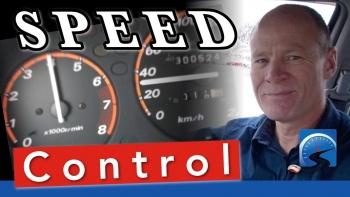 In lesson #2 we'll combine the clutch and the accelerator for a easier and smooth start in a manual transmission.
In lesson #2 we'll combine the clutch and the accelerator for a easier and smooth start in a manual transmission.
And yes, when you start driving and you get good clutch control, you're going to add in the throttle and you're going to give it a bit of throttle to get going just so you can get going faster.
But you have to learn clutch control first.
You have to learn the basics of a manual transmission.
And the basic component of driving a manual transmission is learning clutch control.
Once you're able to do that, then the rest of driving a manual transmission is going to be fairly easy.
You're going to have a bit of bumps and challenges, but for the most part get the fundamentals into place.
Question for my smart drivers:
Do you have any exercises for new drivers who are learning how to drive a manual transmission that will help them to control the clutch better?
I'm Rick with Smart Drive Test.
Thanks very much for watching.
If you like what you see here, share, subscribe, leave a comment down in the comments section.
As well, hit that thumbs up button.
Check out all the videos here on the channel if you're working towards a license or starting a career as a truck or bus driver.
Lots of great information here.
 On many newer manual cars you have to depress the clutch all the way or the engine will NOT start.
On many newer manual cars you have to depress the clutch all the way or the engine will NOT start.
As well, head over to the website, great information over there and online-- awesome online courses that you can purchase.
Leave a comment down in the comments section there.
All of that helps out the new drivers learning how to drive a manual transmission.
I'm Rick with Smart Drive Test.
Thanks again for watching.
Good luck on your road test, and remember, pick the best answer, not necessarily the right answer.
Have a great day.
Bye.
Blooper
Hi there, smart drivers.
It's Rick with Smart Drive Test.
That's-- no, the snow is coming off the roof and rolling down the front windshield.
I'm all confuffled, because I'm like, what the heck is going on? Of course, I'm sitting in the car in a parking lot.

